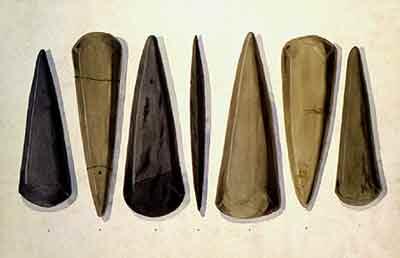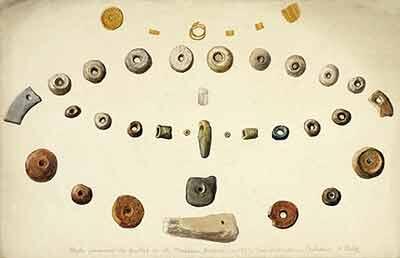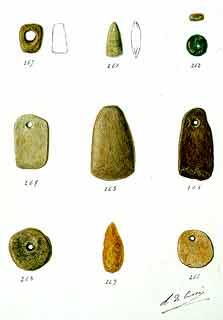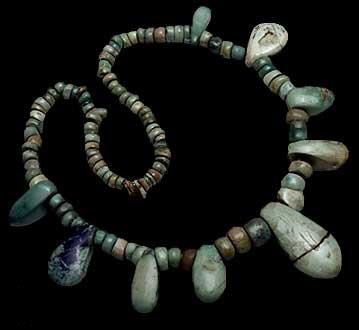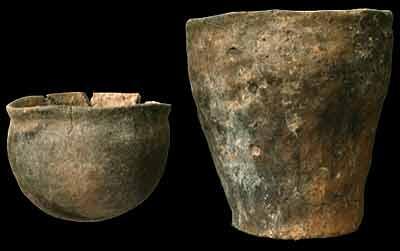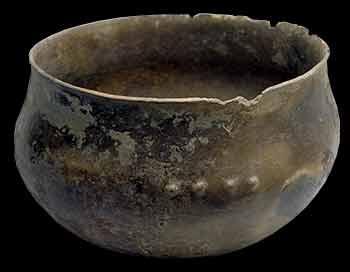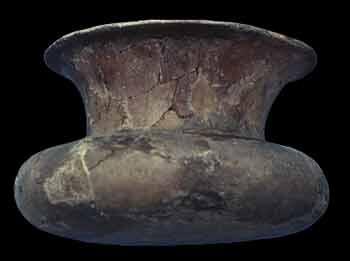- Home
- Discover the megaliths of Morbihan
- Art reflects the sacred
- Introduction
"Mother Goddess", granite sculpture by Jules Paressant.
"Par l'art seulement, nous pouvons... savoir ce que voit un autre de (son) univers qui n'est pas le même que le nôtre" [Art alone provides an insight into other people's unique vision of their own particular universe.](Marcel Proust)
Art is always an ambiguous concept since it has so many contradictory acceptions.
Aesthetic and symbolic motifs are used in the Western European Neolithic principally on artefacts and in megalithic rock art.
There are only a few remaining traces of prehistoric art: the 'performing arts' (music, dance, oral literature) have disappeared without trace and only very few regions, such as the northwestern Iberian peninsula, still bear evidence of the 'plastic arts' (for example: painting).
Everywhere else, only the works engraved or sculpted on long lasting materials survived. What weaving, embroidery, matwork, etc, could have been back then is a total mystery.
In the light of man's natural inclination towards bodily decoration and colour, the information we have looks very deficient.
Diaporama
Next slide
Previous slide
Polished stone axes found in the Saint-Michel tumulus, watercolor by J. Miln, 1874.
Gold and stone ornaments found in the dolmens of Morbihan, watercolor by J. Miln, 1874.
Pottery found in the dolmen of Kercado, drawing gouache L. de Cussé.
Lithic artefacts: drops, hatchet, pearl, perforated discs and arrowhead found in the dolmen at Kercado. Gouache drawing by L. de Cussé.
Neolithic potteries. Gouache drawing by L. de Cussé.
Callaïs necklace from the Saint-Michel Tumulus.
Small bowl and 'flower pot', dating from the end of the Neolithic (lateral entrance tomb of Saint-Quay-Perros, Côtes-d'Armor).
Ornamented vase found in the barrow at Moustoir
Chassean vase, Lacuste dolmen at Colpo.

